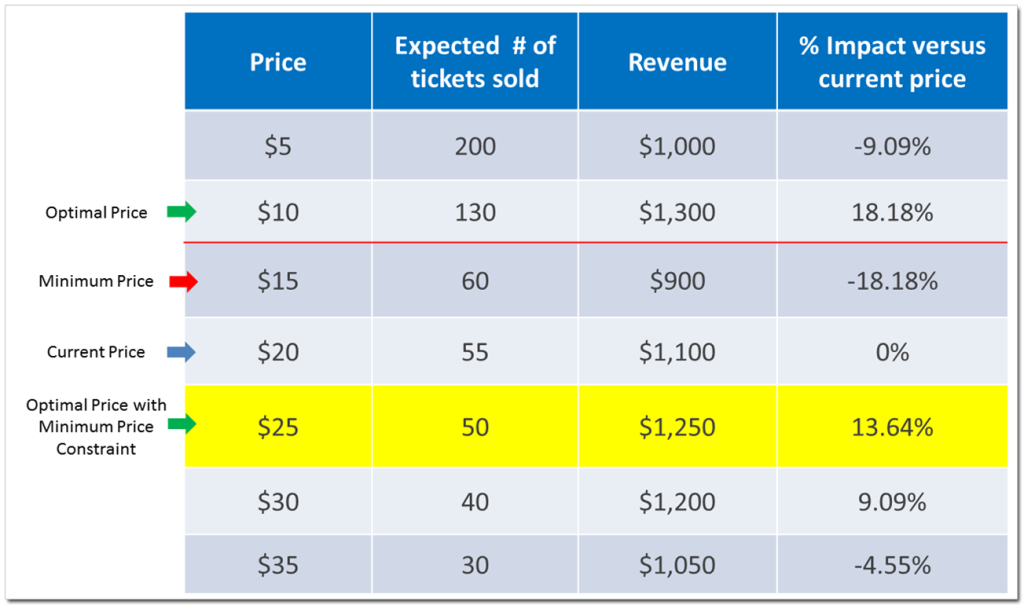
Single-game tickets prices are often constrained by a minimum price that may be higher than the true optimal price (Photo credit: Wisconsinart)
Many sports organizations have already adopted some sort of variable pricing by implementing different prices for different games based on day of the week, opponent, or time in the season. But where can you go from there? Dynamic pricing—updating prices frequently to zero in on the optimal price—is a logical next step where variable pricing is already in place.
To move to dynamic pricing, one of the first things you need to understand is what your business constraints are, and whether or not you are willing to break them to achieve a desired goal.
Season ticket holders are the lifeblood of a team, so teams often set a minimum price for single-game tickets in sections where season ticket holders sit, to avoid hard feelings when their most loyal fans realize that the person on the street got a better price for the game than they did. In this scenario, lowering the price may sell a few more tickets, but if you are bound by the minimum price constraint you may ultimately forfeit more money than would have been realized at a different, higher price.
So, if a team feels it must adhere to an absolute minimum price constraint, then what is the optimal price?
If historical sales and current sales rate are analyzed and factored in, it’s possible to project expected sales at different prices and make an educated decision on the optimal price with a hard minimum price as shown in the table (Figure 1) below.

Figure 1
In this case, the $10 price point generates more revenue, but that option has been taken off the table by the minimum price constraint. Under the constraint, the most optimal price is $25.
(It’s important to note that this is a simplified view of one aspect of determining the optimal prices for sports tickets. Every team has its own set of unique circumstances that affect how the optimal price is derived, which is why at Digonex we spend a great deal of time with clients on data gathering, goal-setting and scoping to create a customized solution to realize the client’s objectives).
Many teams fear upsetting their season ticket holders, but so long as the season ticket holders get a better deal over the course of a season than someone buying single tickets to every game, there may be individual games where the opportunity exists to go below the minimum price to maximize revenue. This may also provide a chance to reach new, more price-sensitive fans to foster long term growth. In short, price constraint rules are good, but rules are also meant to be broken on occasion. As you’ve seen in the example, you can hone in on the optimal price by understanding how your constraints impact sales and revenue.
